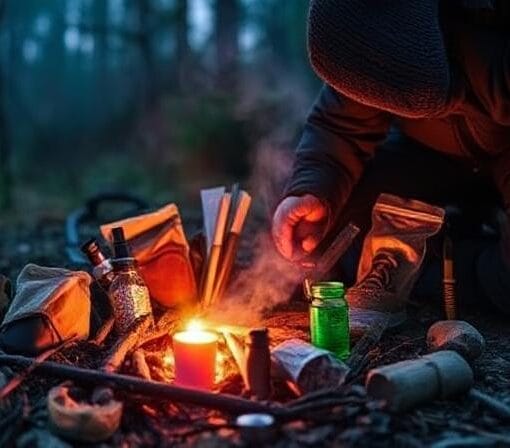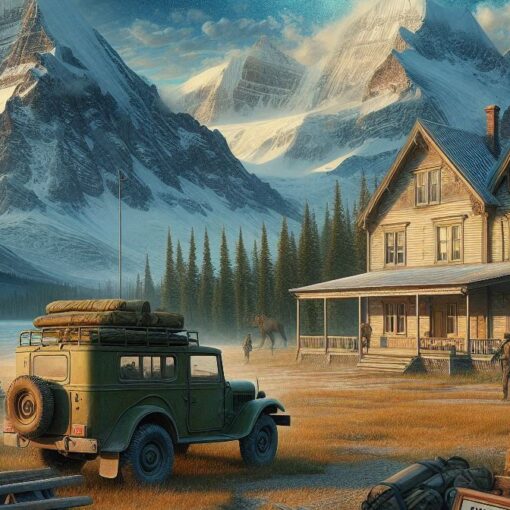Please Note: This post may contain affiliate links. If you click one of them, we may receive a commission at no extra cost to you. As an Amazon Associate, I earn from qualifying purchases.
Top Takeaways and Key Concepts
- Start with staple foods like rice, beans, and canned goods to build a long-lasting pantry base.
- Plan meals and consider dietary needs to avoid waste and store foods your family will eat.
- Store food correctly using airtight containers in cool, dark spaces to extend shelf life.
- Rotate pantry stock by using older items first and labeling expiration dates clearly.
- Expand variety over time with spices, oils, snacks, and even home-grown produce for nutrition and flavor.
Summary of This Article
This article explains how to build a reliable prepper pantry for emergencies, budget protection, and peace of mind. It encourages starting with non-perishable basics like grains and canned goods, planning meals based on family preferences, and storing food safely in airtight containers. The article also highlights the importance of rotating stock to prevent waste and gradually expanding pantry items to include spices, snacks, and home-grown foods. With proper organization and planning, anyone can build a pantry that provides comfort, security, and long-term preparedness.
Short Video Version of this Article
Creating a prepper pantry? Oh, it’s such a fun project! It’s not just about filling shelves with food. It’s really about being ready for anything life throws at us. You never know when a storm might hit or when you just want to eat a bit better. Having a pantry stocked up? Total game changer!
Think about it. If a natural disaster happens, you’re ready. If money gets tight, you won’t feel panicky. And can we talk about how nice it is to have healthy snacks handy? Seriously, it’s like having your very own treasure chest of food.

Start with the basics. Canned goods, rice, beans—all those staples. They last a long time and can make so many meals. Think about what your family loves to eat. Keep those flavors in mind while you shop.
Consider adding some dried fruits and nuts for quick energy snacks. It’s easy to grab a handful when you’re busy. Also, maybe think about some freeze-dried meals. They’re perfect for camping or just busy nights when cooking feels like a lot.
Every time you add something, it feels like you’re preparing for an adventure. Oh, and don’t forget water! Keeping extra supplies of water is just as important. It’s all about peace of mind, really.
With a little effort, your pantry can be a safe haven filled with yummy, nourishing food. Getting started is half the fun. Let’s make this journey together!
Understanding Your Needs

What do you actually need? This question might seem simple, but it’s essential to think about your family’s dietary preferences and needs.
Do you have any allergies or specific dietary restrictions? By the way, knowing what you like to eat makes it easier to choose foods that will actually get used instead of going to waste.
I remember when I started my pantry. I just grabbed canned goods like they were going out of style. Turns out, I didn’t think it through very well. A few months later, I found a bunch of expired stuff! Yikes! So, lesson learned—planning is key.
Sitting down to think about meals is so helpful. You’ll want to pick foods everyone actually likes. No one wants to eat something they don’t enjoy, especially in a pinch! Make a list of favorite meals and what’s needed to make them.
Don’t forget about how many people you’re feeding. If it’s just you, that’s one thing. But if you’ve got a whole family, it’s a different story. You want to have enough food to last a while, right? Aiming for at least three months’ worth is a smart move. It gives you breathing room if something goes sideways.
Variety matters too. Eating the same thing gets boring fast. Mix it up! You can have pasta one night, soup the next, and maybe some fun tacos after that.
Building your pantry can really be an adventure. It feels good to know you’re ready for anything, especially with tasty food in the mix. So grab those favorite recipes, make that list, and let’s get to work!
Choosing the Right Foods
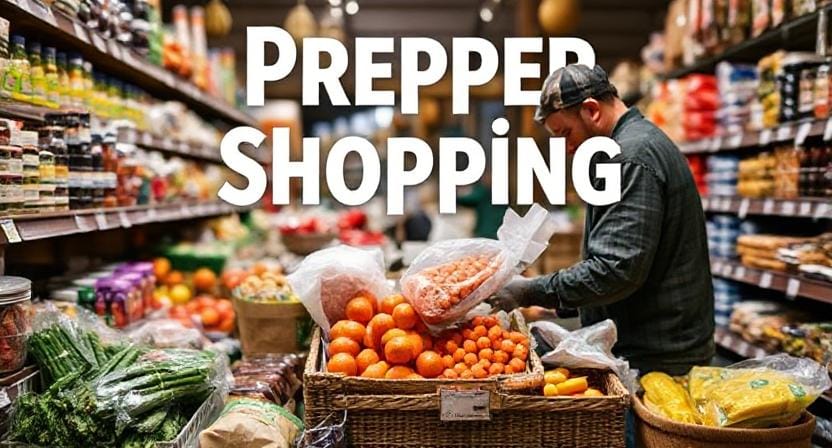
Now that you know what you need let’s talk about choosing the right foods for your prepper pantry. Focus on non-perishable items with long shelf lives such as grains (rice, oats), legumes (beans, lentils), canned vegetables and fruits, and dehydrated meals. Interestingly enough, these staples are not only filling but also versatile!
I always keep dried beans in my pantry. They’re super healthy and can be used for so many meals. You can throw them in soups, mix them into salads, or even make a yummy bean dip!
I remember this one camping trip. We cooked beans over a campfire, adding spices from our gear. It turned into one of the best meals ever! Sitting there, enjoying that warm food under the stars. Such a great memory.
Snacks are just as important! Don’t forget those. Having some nuts or granola bars on hand can really lift your spirits, especially on tough days. Who doesn’t love a good snack?
It’s so nice to have a little something when you’re feeling hungry. It keeps everyone happy. Just think about it. You’re on a hike, tired and ready to sit down. You pull out some granola bars, and it feels like a small celebration!
So, let’s stock up on those beans and snacks. You’ll be grateful to have them when you need them most. Cooking and snacking can make even the toughest times feel a bit brighter!
Proper Storage Techniques
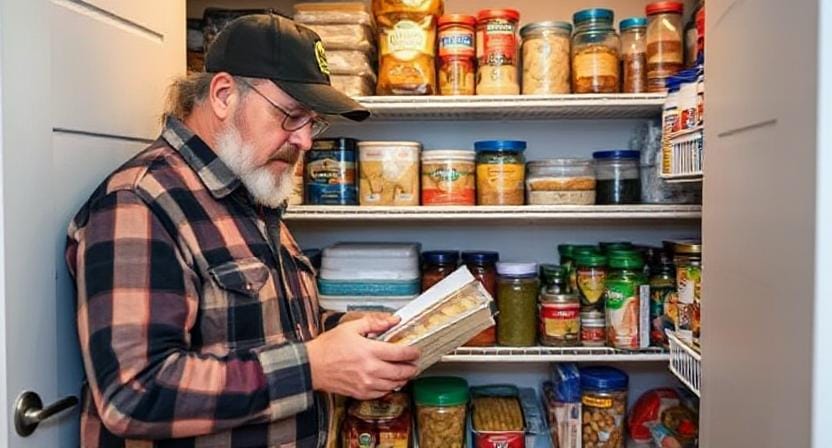
If you want your food to last, you need to store it correctly. One error I made at first was putting everything in one cabinet without thinking about how hot or bright it would be. I learned over time that even the best-prepared food can go bad if it’s too hot or sunny.
For dry commodities like grains and flour, airtight containers are a must. They keep bugs away and things fresh. Finding bugs in your food is the worst thing that can happen. Oh no!
Glass jars are also very useful! When you put them on shelves, they look nice. I like how colorful the food is within. It feels like home and is tidy.
A cool, dark environment is preferable for jars and cans. Think about closets or basements. It really helps the food stay fresh longer. It won’t taste as delicious later if it’s left out in the sun or heat.
You need to take extra caution with vacuum-sealed bags and freeze-dried goods. Make sure to read the guidelines for storage. Pay close attention to them. This manner, your meal will taste finest when you need it.
Just think of how great it would be to open a bag of your favorite food and have it taste just right. What a nice feeling.
Rotating Your Stock
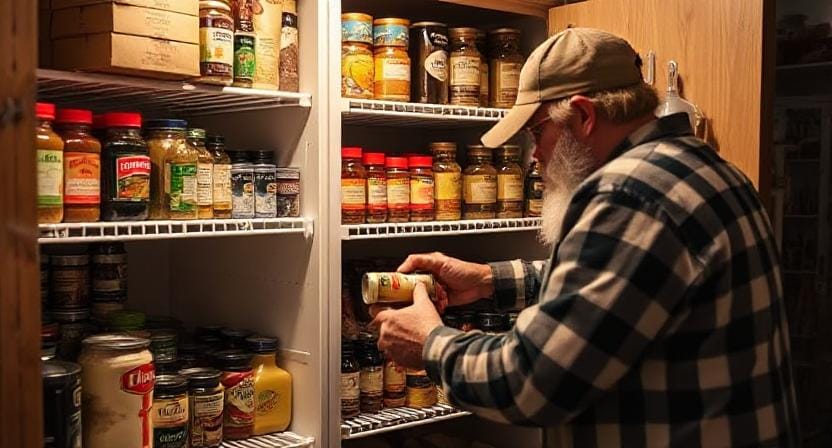
One important aspect often overlooked is rotating your stock regularly. What does this mean? Simply put: use older items before newer ones! It sounds easy enough but keeping track can be tricky sometimes.
I’ve been organizing my pantry lately. You wouldn’t believe what I found—cans hiding behind newer ones. Some were dated years ago! Talk about a surprise. I felt a little guilty seeing all that food go to waste.
Now, I’ve started writing dates on my labels. It’s so helpful! This way, I know which ones to grab first. No more surprises hiding in the back.
Meal planning has become my new favorite thing. It helps me use what I have before I go shopping. Plus, it saves money! Who doesn’t love saving a little cash? And nothing goes stale.
It feels good to know my pantry is sorted and ready. I can grab stuff without worrying. Just makes life easier, you know? It’s fun to create meals from what you’ve got. Like a little adventure every week!
Expanding Beyond Basics
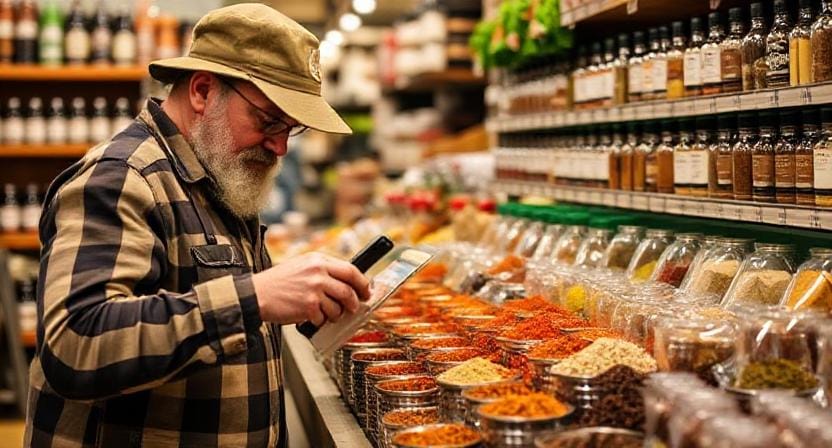
As you become more comfortable with building your prepper pantry basics—why not expand beyond them? Think about adding items like spices for flavoring dishes or cooking oils that enhance nutrition while making meals exciting!
One time, we went on an outdoor adventure, and let me tell you, resources were super limited at the campground. We had to get creative with what we brought. With just a few spices and seasonings we packed, we ended up making some really tasty meals!
It amazed me how just a little sprinkle of something could turn a plain dish into a gourmet experience. Even in tough spots, those small additions made everything so much better. Who knew a dash of this or that could make such a difference?
Speaking of making the most of what you have, have you thought about starting a home garden? It’s actually pretty cool! Growing your own herbs or veggies can save you money. Plus, there’s just something special about picking fresh produce whenever you need it. It’s like having a little treasure in your backyard.
Imagine grabbing fresh basil for your pasta or cherry tomatoes for your salad. So fresh and delicious! Gardening doesn’t take much space either. Just a few pots on a balcony or some sunny spots in your yard. It can really add that extra touch to your meals!
Keeping Track of Inventory
It’s really important to keep track of what’s in your pantry. I know this from experience. You don’t want any surprises under those cans, believe me! It can truly ruin your day to find an old can of soup.
Using a spreadsheet has helped me a lot with keeping track. It helps so much to just write down what you have and when it expires. You can simply identify what’s running low and plan meals without having to guess. It’s like a little guide for how to cook!
There are apps that are only for keeping track of pantry items. They provide a neat way for you to scan things and see them all in one location. Very useful.
It can feel like magic to check your supplies often. You’ll know exactly what you have and what you need. What a relief! You feel like you have control over your survivalist pantry, which is powerful. No more rushing to work things out at the last minute. It definitely makes a difference.
This guide explains how to build a prepper pantry that provides long-term food security, nutritional balance, and peace of mind. By choosing smart food options, storing them properly, rotating supplies, and expanding variety over time, you can create a pantry that supports your family through emergencies or everyday life.
Frequently Asked Questions
What is a prepper pantry and why should I build one?
A prepper pantry is a long-term food storage system designed to provide security during emergencies, financial hardship, or supply shortages. Building one ensures your family always has access to reliable meals.
How do I start building a prepper pantry?
Start with non-perishable staples like rice, beans, canned goods, pasta, and oats. Build gradually by buying a few extra shelf-stable items each time you shop.
How much food should I store in my pantry?
A good starting goal is to build a three-month supply of food your household eats regularly. Expand as needed based on your family size and comfort level.
How can I store food to make it last longer?
Store food in airtight containers and keep it in a cool, dry, and dark place to extend freshness and prevent insects or spoilage.
What is the best way to rotate pantry stock?
Use the “first in, first out” method by placing newer items behind older ones and labeling expiration dates so older food is used first.
What foods should I include beyond the basics?
Once your essentials are covered, add spices, oils, baking supplies, snacks, and comfort foods. These improve nutrition and meal variety.
How do I keep track of pantry inventory?
Maintain a written list, spreadsheet, or pantry app to track quantities and expiration dates. Regular checks prevent waste and save money.
Suggested Resources:
The Ultimate Guide to Prepping
https://www.theprepared.com/guide-to-prepping/
How To Build a Prepper Pantry
https://www.survivopedia.com/build-a-prepper-pantry/
Food Storage Tips for Preppers
https://www.ready.gov/food-storage-tips

Kevin Collier is a seasoned outdoor enthusiast and writer for Trekbug.com, specializing in outdoor adventures, survival strategies, and prepping insights. With a deep love for nature and a commitment to self-sufficiency, Kevin empowers readers to embrace the wilderness confidently. He shares valuable tips, practical techniques, and inspiring stories, helping both novice and experienced adventurers develop essential skills for surviving and thriving in the great outdoors.




